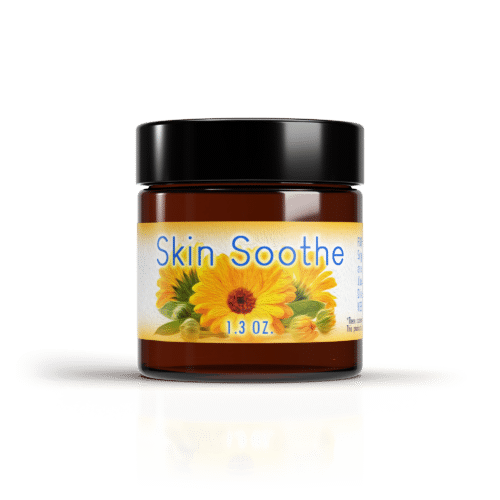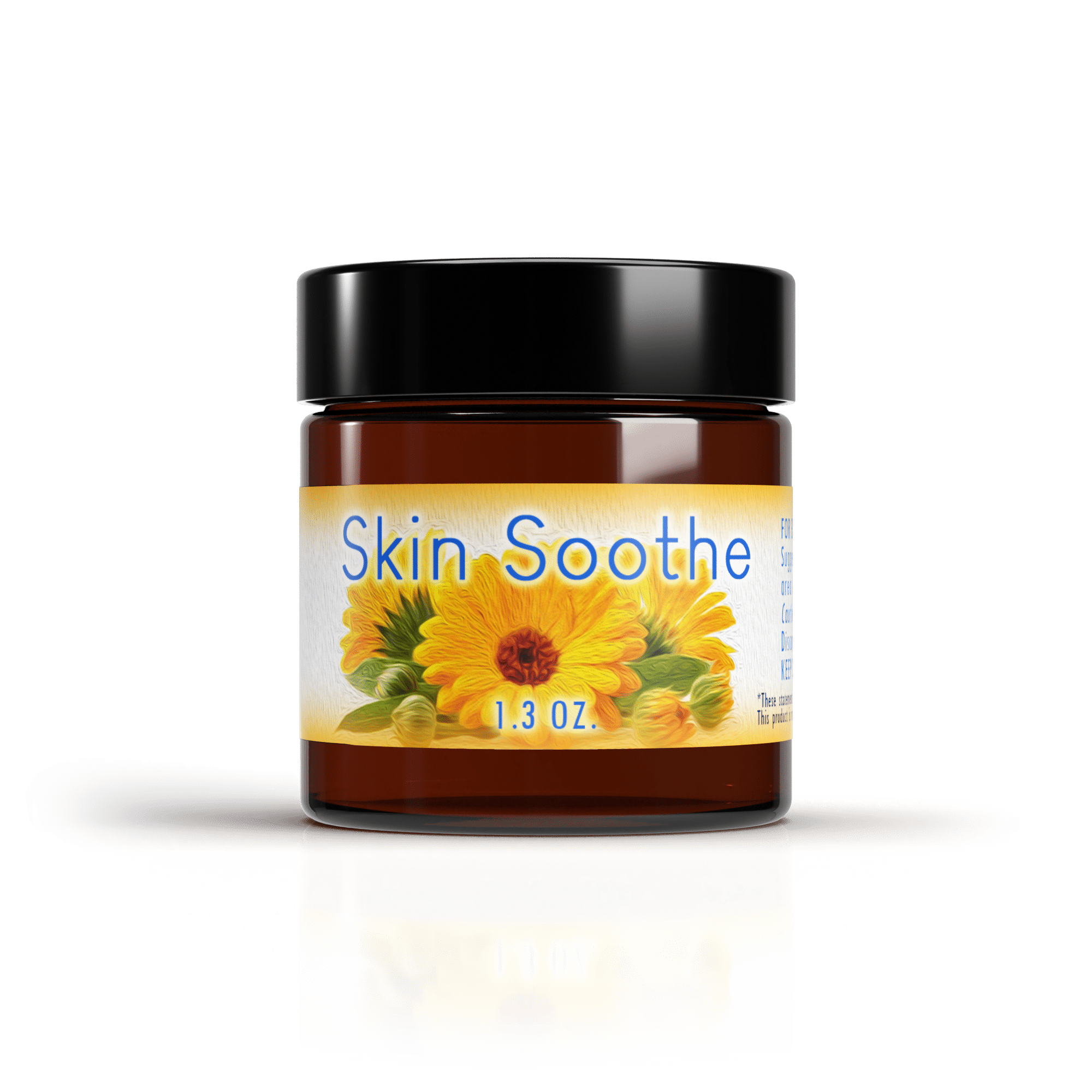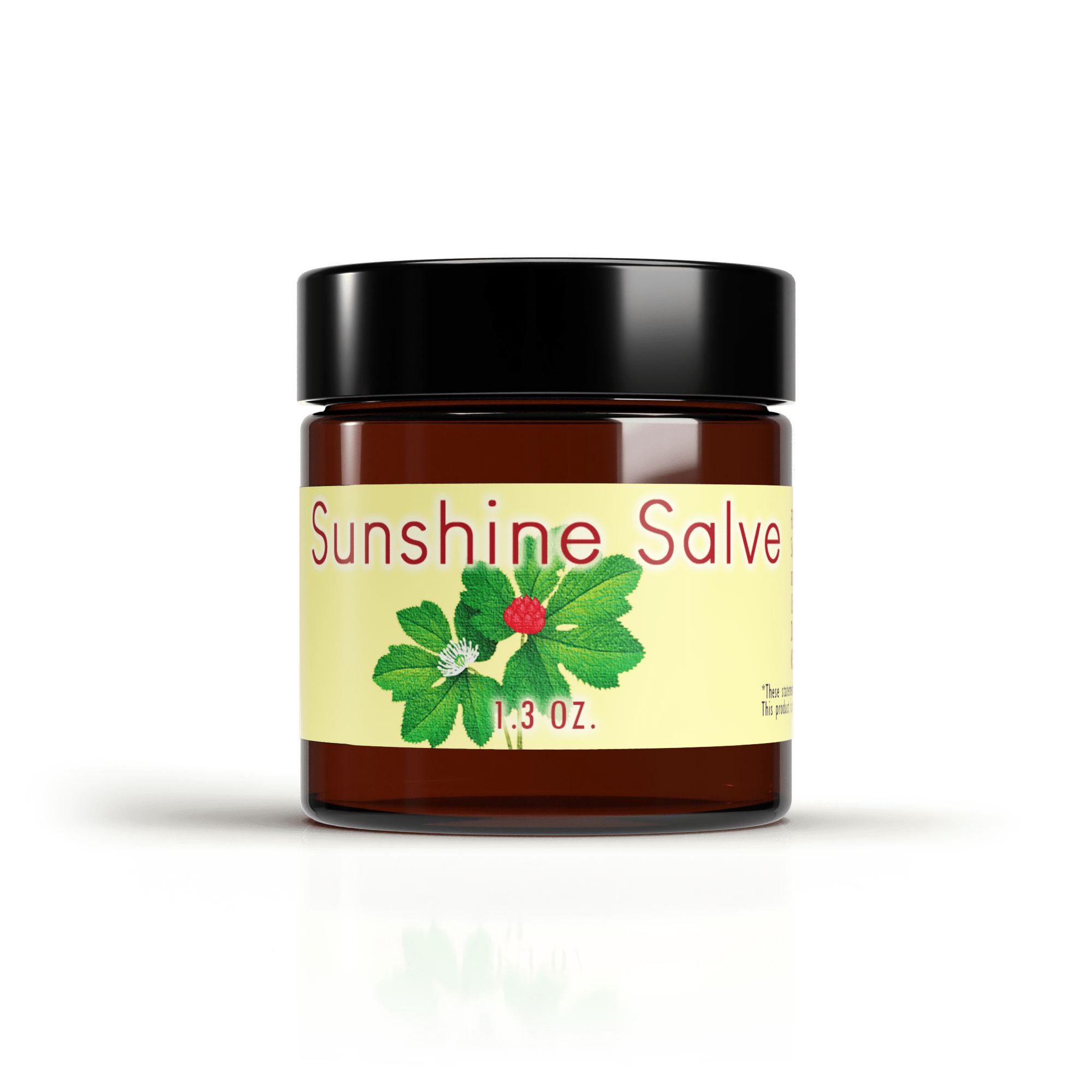All Salves
Herbal Salve: For Care And Restoration
Introduction to Herbal Salves
Herbal salves, often referred to as herbal healing salves, are time-tested natural remedies designed to soothe, nourish, and protect the skin. Crafted from a blend of organic herbs, essential oils, coconut oil, and beeswax, these healing salves offer a gentle yet effective way to address a variety of skin concerns. Whether you’re dealing with dry skin, irritated skin, minor wounds, burns, rashes, eczema, or chapped lips, herbal salves provide a natural solution that supports the skin’s own healing processes. For centuries, people have turned to these salves to treat and protect their skin, appreciating their ability to deliver moisture, reduce discomfort, and promote overall skin health. By harnessing the power of nature’s finest ingredients, herbal salves continue to be a trusted choice for those seeking effective, natural care for their skin.
Herbal Salve: A Time-Honored Natural Remedy
The use of salves can be traced back to ancient times when our ancestors relied on the natural world for healing. Ancient civilizations, including the Egyptians, Greeks, and Romans, used salves to treat wounds and skin conditions. These early medicinal salves were often made from a combination of animal fats, beeswax, and plant extracts. Such concoctions were not only practical but also reflected the deep understanding these cultures had of the natural resources available to them. Over time, the knowledge of creating and using salves was passed down through generations, leading to the diverse range of organic balms we have today.
Types of Salves
There is a wide variety of herbal salves available, each formulated to meet specific needs. Lip balms, for example, are specially designed to soothe and protect chapped lips, providing a barrier against dryness and environmental stress. Body salves are ideal for moisturizing and nourishing dry skin, making them a staple for daily skin care routines. For those dealing with minor wounds, cuts, or scrapes, wound care salves offer targeted relief and support the skin’s natural healing. Many herbal salves can also be tailored to address particular conditions such as eczema or acne, using specific herbs and oils to treat and protect sensitive or troubled skin. When choosing a salve, it’s important to consider your skin’s unique needs and the benefits of the ingredients, ensuring you select a product that will soothe, nourish, and restore your skin effectively.
The Benefits of Herbal Healing Salves
Traditionally, salves were applied to the skin to address a variety of issues. They were believed to draw out impurities, promote healing, and provide a protective barrier against infection. This made them particularly valuable in treating wounds, burns, and skin irritations. Herbal salves can be used for cuts, burns, dry skin, chapped lips, bug bites, hemorrhoids, rashes, and itching, showcasing their versatility in addressing common skin concerns. Natural healing ointments can be used externally from head to toe, further emphasizing their adaptability. Beyond physical ailments, salves were often part of spiritual and ritualistic practices, symbolizing purification and protection. The traditional uses of salves have evolved but still hold relevance in modern holistic health practices, where natural and gentle healing methods are increasingly sought after.
There are numerous benefits to using salves as part of your natural remedies arsenal. Let’s explore some of the key advantages:
One of the primary benefits of herbal salves is that they are made from natural ingredients. This means they are free from synthetic chemicals and artificial additives that can irritate the skin. Common ingredients in medicinal salves include beeswax, coconut oil, olive oil, and a variety of herbs known for their healing properties, such as calendula, chamomile, and comfrey. Olive oil is frequently incorporated into herbal salves for its emollient qualities, which help to soften and hydrate the skin. Additional ingredients like shea butter or cocoa butter are often included to adjust texture and richness, enhancing the overall quality of the salve. Herbal salves typically contain little or no water, making them richer and more concentrated than creams or lotions. The use of natural ingredients ensures that the skin receives nourishment without the risk of adverse reactions often associated with synthetic products. Additionally, the therapeutic properties of these ingredients can enhance the skin’s natural repair processes, promoting overall health and well-being. Herbal salves are known for their wonderful soothing and healing qualities, making them especially effective for relieving discomfort from various skin ailments.
Healing Salve: Easy to Use and Highly Versatile
Salves are incredibly easy to use. Simply apply a small amount to the affected area and gently massage it into the skin. Their semi-solid consistency ensures that they stay in place, providing a long-lasting protective layer. This makes them ideal for treating localized skin issues. The convenience of salves is a significant advantage for those with busy lifestyles, as they can be applied quickly and discreetly. Furthermore, their compact size makes them easy to carry, ensuring that you have a remedy on hand whenever needed. Commercial herbal salves are available in small tins for convenience and portability, making them even more practical for everyday use. Many commercial herbal salves are infused with high-quality organic oils and beeswax to create creamy and concentrated products, further enhancing their practicality and effectiveness for everyday use.
Herbal salves are highly versatile and can be used to address a wide range of skin conditions. From soothing dry, cracked skin to alleviating insect bites and minor burns, salves offer a natural solution for many common skin problems. Additionally, they can be infused with specific herbs to target particular issues, such as lavender for relaxation or arnica for bruising. Users report that herbal salves can aid in minimizing scars from burns, adding to their appeal as a natural remedy. Herbal salves penetrate the skin more deeply than synthetic alternatives, allowing their active ingredients to work more effectively, which is particularly beneficial for more serious dry skin conditions. This versatility extends beyond physical ailments, as certain salves can also provide aromatherapeutic benefits, enhancing mood and reducing stress. The pleasant smell of these salves, often derived from natural essential oils, adds to the overall sensory experience, making application soothing and comforting. The ability to customize salves by adding different essential oils and herbs makes them a personal and adaptable remedy for various needs.
The Role of Coconut Oil in Herbal Salves
Coconut oil is a popular carrier oil used in many herbal salves due to its nourishing and moisturizing properties. Rich in fatty acids, it helps to hydrate the skin deeply while providing a natural barrier against environmental irritants. Its lightweight texture allows it to absorb quickly without leaving a greasy residue, making it ideal for use in healing salves. Beyond its skin benefits, coconut oil also has mild antimicrobial properties, which can aid in preventing infection when applied to minor wounds or irritated skin. Grapeseed oil is another commonly used ingredient in herbal salves, valued for its skin-nourishing properties and ability to improve skin elasticity. Incorporating coconut oil and grapeseed oil into salve formulations enhances their effectiveness and contributes to overall skin health. Additionally, Vitamin E is often added to herbal salves for its role in skin nourishment and preservation, further boosting their benefits.
Organic Herbs in Salve Making: Nourishing and Effective
Creating your own salves at home is a rewarding process that allows you to tailor the ingredients to your specific needs. Here’s a simple guide to get you started:
To make a basic herbal salve, you will need the following ingredients:
- 1 cup of carrier oil (such as olive oil or coconut oil)
- 1 ounce of beeswax
- 1/4 cup of dried herbs (such as calendula, comfrey, or lavender)
Consider experimenting with different carrier oils and herbs to create unique blends that cater to specific skin concerns. For instance, almond oil can add extra moisture, while essential oils like tea tree can enhance antibacterial properties.
Start by infusing your chosen herbs in the carrier oil. This can be done using a double boiler or a slow cooker. Gently heat the oil and herbs over low heat for several hours to allow the beneficial properties of the herbs to infuse into the oil. This slow process ensures that the nutrients and active compounds are fully extracted, maximizing the salve’s effectiveness. Infusing oils not only captures the essence of the herbs but also allows you to engage in a mindful practice, connecting with the natural healing process.
Once the oil is infused, strain it through a fine mesh strainer or cheesecloth to remove the herbs. Make sure to press out as much oil as possible to capture all the goodness. This step is crucial to ensure a smooth texture in the final product, free of any plant debris. The clarity of the strained oil is a testament to the careful infusion process, ready to be transformed into a healing balm.
In a clean pot, gently heat the infused oil and beeswax together until the beeswax is fully melted. Stir the mixture well to ensure the beeswax is evenly distributed. The beeswax not only thickens the salve but also adds a protective barrier to the skin, locking in moisture. As you blend these ingredients, you witness the transformation from liquid to a solid balm, a satisfying culmination of the crafting process.
Carefully pour the liquid salve into small, clean jars or tins. Allow it to cool and solidify before sealing the containers. Your homemade herbal salve is now ready to use! The beauty of making your own salve is that you can adjust the consistency by altering the ratio of beeswax to oil, creating a product that perfectly suits your preferences. Once cooled, these containers of salve become a testament to your craftsmanship and a beneficial addition to your natural remedy collection.
Tip: Many homemade herbal salves are gentle and non-toxic, making them safe for use on pets for minor skin irritations, wounds, or rashes. Always check the specific herbs used to ensure they are pet-safe.
When considering the price, making your own herbal salve is often much more cost-effective than purchasing store-bought options. Homemade salves can be made in larger quantities at a fraction of the price of commercial products, giving you both quality and savings.
The Role of St. John’s Wort in Healing Salves
St. John’s Wort is a standout ingredient in many herbal salves, prized for its powerful anti-inflammatory and soothing effects. When combined with other healing herbs like plantain and comfrey, it creates a potent healing salve that can aid in the recovery of burns, wounds, and various skin irritations. St. John’s Wort is known to help reduce pain and inflammation, making it especially valuable for treating sensitive or damaged skin. Its natural compounds support the skin’s ability to regenerate and repair, while also providing a calming effect that eases discomfort. By incorporating St. John’s Wort into your herbal salve routine, you can harness the benefits of this remarkable herb to promote faster healing and healthier skin, all while relying on the gentle power of nature.
Making Your Own Salve: A Step-by-Step Guide
Creating your own herbal salve at home is both simple and satisfying, allowing you to customize the blend to suit your skin’s needs. Start by gathering organic herbs, coconut oil, and beeswax. Begin the process by infusing your chosen herbs in coconut oil—either by gently heating the mixture or letting it steep for several hours to draw out the beneficial properties. Once the oil is richly infused, strain out the herbs and combine the oil with melted beeswax. Pour the warm mixture into a clean tin or jar, then let it cool and solidify into a soothing balm. Your homemade salve is now ready to use—simply apply a thin layer to the skin and massage it in gently for best results. For extra hydration on dry skin, add a few drops of water to the salve in your hand and blend before applying. This simple process yields a nourishing, natural product that can soothe and protect your skin every day.
Choosing the Right Salve for Your Needs
Selecting the best herbal salve for your skin starts with understanding your unique needs and the benefits of different ingredients. Look for salves made with organic herbs and natural components like coconut oil and beeswax, which are known for their soothing and nourishing properties. If you struggle with dry skin, opt for a salve rich in emollients to lock in moisture and restore softness. For irritated skin, choose a formula that features calming herbs such as St. John’s Wort and plantain to help reduce redness and discomfort. Always store your salve in a cool, dry place to maintain its potency and effectiveness. By choosing the right herbal salve and using it regularly, you can enjoy the healing, protective benefits of nature’s finest ingredients and keep your skin healthy, hydrated, and resilient.
The Role of John’s Wort in Healing Salves
There are countless herbs that can be used to create effective healing balms. Here are a few popular choices:
Known for its anti-inflammatory and antimicrobial properties, calendula is ideal for soothing irritated skin and promoting healing. Its vibrant petals are not only visually appealing but also packed with beneficial compounds that accelerate skin repair. Calendula’s gentle nature makes it suitable for sensitive skin, providing relief without causing further irritation.
Comfrey is often used in salves for its ability to speed up the healing of bruises and sprains. It contains allantoin, which promotes cell regeneration. This herb has been revered for its ability to reduce swelling and pain, making it a staple in treatments for injuries. Comfrey’s potent properties have earned it the nickname “knitbone,” reflecting its historical use in mending broken bones and tissue.
Lavender’s calming scent and anti-inflammatory properties make it a great choice for salves aimed at relaxation and soothing skin irritations. Its aromatic qualities not only provide a sense of tranquility but also enhance the healing experience. Lavender is a versatile herb, often used to alleviate headaches, anxiety, and insomnia, making it an invaluable addition to holistic healing practices.
John’s Wort is another powerful herb frequently incorporated into healing salves. Known for its wound-healing and anti-inflammatory effects, it supports skin regeneration and can soothe nerve pain. Its bright yellow flowers infuse oils with potent compounds that make salves especially effective for treating minor wounds, burns, and irritated skin.
Incorporating Herbal Salves into Your Wellness Routine
Incorporating salves into your herbal medicine routine is simple and can greatly enhance your overall well-being. Here are some tips for making the most of these natural remedies:
Identify specific skin issues or ailments you want to address, and choose herbs and salves that target those concerns. For example, use a comfrey salve for bruises or a calendula salve for cuts and abrasions. Tailoring your salve selection to your needs ensures that you maximize their healing potential. Understanding the properties of different herbs empowers you to make informed choices, creating a personalized approach to natural health.
For best results, apply salves regularly to the affected area. Consistent use can help maintain skin health and prevent future issues. Establishing a routine with salves can also foster a deeper connection with your body, encouraging mindful self-care practices. The regular application of salves becomes a ritual, a moment to pause and nurture yourself amidst the busyness of daily life.
To ensure the longevity of your homemade salves, store them in a cool, dark place. Proper storage helps preserve the potency of the herbs and prevents the salve from melting or becoming rancid. Investing in airtight containers can further protect your salves from exposure to air and moisture, maintaining their efficacy over time. Herbal salves can last up to six months if stored in a cool, dry spot, ensuring they remain a reliable part of your herbal medicine cabinet. Properly stored, these balms remain a reliable part of your herbal medicine cabinet, ready to support your health whenever needed.
Salves in herbal medicine offer a natural, effective way to treat a variety of skin conditions and ailments. With their rich history, diverse benefits, and ease of use, it’s no wonder that these healing balms continue to be a popular choice for those seeking natural remedies. Many people prefer using natural products for skin care to avoid chemicals, making herbal salves an appealing option for those looking to embrace a more holistic approach. Whether you choose to purchase ready-made salves or craft your own at home, incorporating these versatile treatments into your routine can help you harness the power of herbal healing. Embracing salves as part of your wellness journey not only supports physical health but also nurtures a deeper appreciation for the natural world and its abundant healing resources.
Don’t forget to share your favorite herbal salves or homemade recipes with friends—building a community around natural healing can be both rewarding and inspiring.
Disclaimer: Herbal salves are not intended to diagnose, treat, cure, or prevent any disease. Please consult a healthcare professional for medical advice. For organic herbal products, visit Press On Herbals – Organic Tinctures, Salves, Teas And More.

 Skin Soothe Salve
Skin Soothe Salve 


